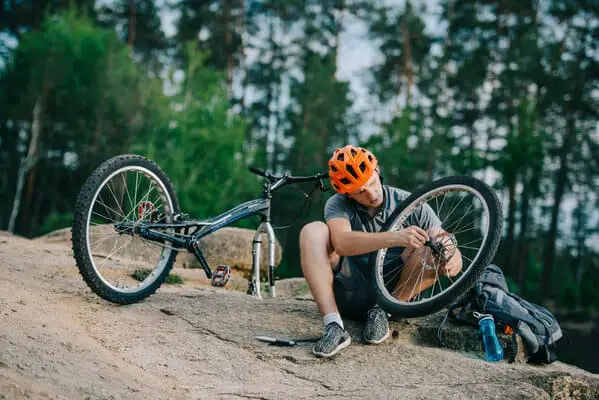Choosing the best mountain bike for your needs is vital if you want to get maximum enjoyment out on the trails – but finding the right machine in a crowded market can be a minefield. With this in mind, Stay True bikes have gone a long way in crafting, repairing, and modifying their MTB units with all of the common pitfalls that can come with MTB. What are Stay True bikes?
Mechanic owned and operated, Stay True Cycles is committed to quality repair with fast turnaround and helping build and maintain the cycling community of the East Bay of California. Their bikes prioritize both innovation and safety to glide through a wide array of terrain for all MTB enthusiasts.
Still unsure about Stay True bikes, fear not, because our ultimate guide to buying a Stay True mountain bike will run you through everything you need to know, from choosing the best machine for your budget, to matching a bike to your riding style. We’ll also highlight the most important spec features you should look out for on a Stay True mountain bike and then point you to our full buyer’s guides of the best buys at each price point.
Stay True Cycles: An Overview
Choosing a new mountain bike to buy can be daunting. The sheer variety of mountain bike types, not to mention the bewildering array of technology and terminology, can be overwhelming.
Technology evolves year on year, new mountain bike standards emerge, and old ones swiftly become outdated. An ever-growing dictionary of jargon means the mountain bike market can be a confusing place, even for seasoned riders.
Highly specialized bikes sit side-by-side with machines that claim to excel at everything. And they’re all spread over such a vast price range that it can be hard to know where to start.
Our objective with this guide is to set out all the factors you should consider when looking for a new ride, from wheel size and the amount of suspension travel, to bike category and how to choose the right size. And we have found all of that with Stay True Bikes.
With a Stay True cycle, it’s important to establish early on what sort of trails you intend to ride and on what terrain you want your bike to excel.
This will help you decide what category of bike you need, from short-travel, lightweight cross-country rigs to robust, chunky downhill race bikes.
Stay True Cycles Mechanics Overview
Humble hardtail or full-suspension mountain bike – which is best for you?
A hardtail mountain bike has a suspension fork at the front, while a full-suspension bike pairs a suspension fork with rear suspension.
There are certainly pros and cons to both. For a fixed budget, you’ll certainly get a better-specced hardtail for your money, although an entry-level full-suspension bike might still be more capable on rougher trails.
Again, it comes back to what kind of riding you enjoy. In a game of hardtail vs full-suspension, a hardtail tends to win for climbing, with a direct connection from crank to axle giving a more efficient response to pedaling, as well as being a little lighter.
Hardtails are easier to maintain too, needing less intensive servicing, as well as tending to be more budget friendly.
Full-suspension mountain bikes are more capable on technical terrain.
Some people recommend the best hardtail mountain bikes for beginner riders, as they’ll teach you about the importance of line choice. But what’s great about Stay True bikes is that these bikes–the Cervelo, for example–is a bike that could take on all of these extremes, do it well, and fit fenders in case the ominous clouds turn into a downpour 130 km into your day. It is also perfect for beginners.
Affordable beginner bikes will often have quite conservative geometry and basic kit, while more specialized ‘hardcore hardtail’ options will have longer and slacker geometry, along with burlier parts to help them handle better at speed and in the rough.
- Schwinn aluminum dual suspension frame and powerful Schwinn suspension fork soak up bumps and thumps to provide you a durable riding experience
- 24 speed shifters and front and rear derailleurs make gear changes easy and smooth
- Front and rear mechanical disc brakes provide crisp all condition stopping out on the trail
- Extra wide double wall alloy rims are light and strong for added durability; 2.25 inch wide knobby mountain tires are ready for bumpy terrain
- Durable Schwinn alloy cranks provide steady gearing and less pesky maintenance on your
Prices pulled from the Amazon Product Advertising API on:
Product prices and availability are accurate as of the date/time indicated and are subject to change. Any price and availability information displayed on [relevant Amazon Site(s), as applicable] at the time of purchase will apply to the purchase of this product.
Full-suspension mountain bikes really excel when things get rougher, so if you think you’ll be wanting to tackle more technical trails and features, then you might want to consider one.
You can read up on mountain bike rear-suspension systems before you buy to check out the different options and how they work.
However, the good news is that, these days, the vast majority of rear suspension designs work pretty well. Shortlisting bikes based on their linkage doesn’t make sense unless you’re after a specific ride characteristic. Stay True Bikes can modify these dynamics based on your desired specifications.
For a long time, 26 in mountain bike wheels were the standard, but with the exception of dirt-jump and slopestyle bikes, they’ve been phased out in favor of larger, faster-rolling hoops.
Any new adult bike will likely come with either 27.5 in (also known as 650b) or 29 in-diameter wheels.
The disadvantages on some Stay True bikes are that the bigger wheels accelerate slower, take more effort to slow down and are harder to initiate a turn with. This isn’t a problem in most scenarios, but if you have quite a dynamic riding style or like to ride trails that are tight, twisting and steep, then 650b can be preferable.
Early 29ers had some handling quirks, but modern geometry means they now ride as well as smaller-wheeled bikes, such as the Stay True Marin, which is designed for MTB joyriding.
The extra height of 29in wheels is a factor to consider though, especially if you’re not very tall. Summed up in one line, we’d say 650b is fun, 29in is fast – which, of course, can also be fun…
Finally, mullet bikes use different sized wheels at either end of the bike, most commonly a 29in front wheel for speed and rolling over obstacles, and a 27.5 in back wheel for sharp handling at the rear.
Aluminium is often favoured thanks to its strength and affordability. You have four main options when it comes to frame material for bikes: aluminium, steel, titanium and carbon fibre.
Aluminium is the most commonly-used frame material for mountain bikes because it offers a good balance of strength, weight and cost.
Steel is a popular choice with smaller boutique brands, not only because it’s widely available and easy to work with, but also because the same strength can be achieved with thinner-walled and smaller-diameter tubes, resulting in a desirable amount of bump-absorbing ‘compliance’ (flex). This is particularly applicable to hardtails.
Bike Dynamics Stay True Addresses
Carbon has long been one of the buzz words used to ‘upsell’ to bike buyers. To some extent, this is justified, because carbon fibre gives designers near-limitless control over frame shapes and ride characteristics, as well as the potential to build an incredibly light and strong chassis – important if choosing a featherweight XC race bike.
Cheaper carbon frames aren’t necessarily laid up with the same care and attention to detail, though. Also, be aware that at lower price points, brands will often spec cheaper build kits to prevent the complete bike looking too expensive compared to the next (aluminium) model down.
A better-specced aluminium bike will almost always ride better than a carbon frame decked out with cheap kit.
You could call this category the burly cousin of the trail bike. all-mountain bikes are the centerpiece of the race format called “Enduro,” where climbing is necessary, but only the downhill sections are timed and scored on.
An all-mountain or enduro mountain bike is the perfect rig if you’re willing to earn your ride by pedaling up but are really in it for the downhill with technical terrain and airtime in mind. That being said, if you want to skip the pedaling and do a couple of laps at a bike park or even some shuttle accessed terrain, an all-mountain bike can handle that too.
Stay True advertises bikes that can meet the following specifications:
- Enduro mountain bikes come with 27.5” or 29” wheels, or even mixed “mullet” sizes with 29” in the front and 27.5” in the rear.
- All-mountain bikes have slightly more suspension travel than trail bikes, ranging from 5.5″/140mm to 6.7″/180mm.
- Geometry strongly favors descending to climbing. Head angles in the 65°- 67° range can require some finesse when it comes to steep climbs.
- Long wheelbase and reach, low bottom bracket and slack head angle are key terms when talking about modern all mountain/enduro geometry.
- Tires on all mountain bikes are likely to favor aggressive knobs for cornering and traction since the important part of the ride is gravity assisted.
Tips To Keep in Mind To Avoid Bike Repair

Downhill bikes are designed for steep, gnarly terrain, speed, big drops, and jumps. With these bikes, you’re usually looking for some other way to the top of the trail whether that’s hiking, shuttling or a chairlift.
They simply aren’t made to go any direction but down. If you’re not even remotely interested in pedaling uphill, have the trails & terrain to support high speeds and airtime, and the skill level to handle yourself in these situations, a downhill bike is what you’re looking for.
- Burly frames sporting 6.7″/170mm – 10″/250mm+ of suspension travel in the rear and 7″/180mm – 8″/200mm in the front with dual-crown forks that resemble something you might see on a motorcycle.
- These bikes tend to be extremely slack (less than 65° head angle) and sport a very low center of gravity (bottom bracket) for confidence on steep terrain and aggressive, brown-pow roosting corners.
- Tires on downhill bikes are geared for traction and durability with 2-ply (think double-thick) casings for traction and durability.
Once you are in the right neighborhood, having chosen the type of mountain bike you want, how do you narrow down between the different bikes within these categories? Brand and price definitely factor in here, but if you want to be more scientific, you can compare geometry and specs.
The key takeaway is, differences in specs like reach, head tube angle, and chainstay length influence the fit of the bike and the way it rides. If all of this talk sounds like a foreign language, your best bet is to write down some general notes on these differences, and consult with Stay True Cycles to discuss modifications. Actually, riding a bike is the best way to see what works for you.

